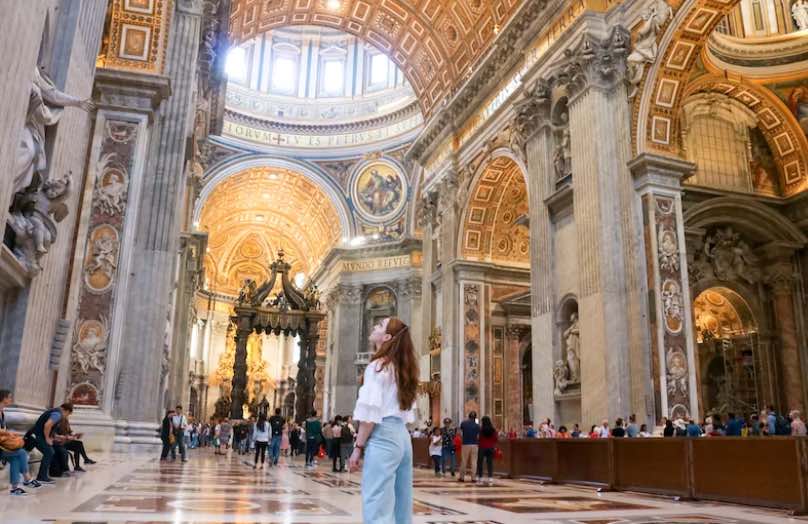The Hidden ROI of Digital Engagement: How Smart Campuses Increase Enrollment & Alumni Giving
University leaders face a paradox: While digital-native students expect seamless, high-engagement experiences, most...

The culture of a tourist destination is its soul. It’s what sets each place apart and gives it a unique charm, making it irresistible to tourists. From food and religion to entertainment, landscapes, and local businesses, these elements form the rich tapestry that is the culture of a destination. Here are nine ways you can market these through Digital Touch Kiosks and accompanying apps to attract new visitors.
Identifying the core culture of a tourist destination requires a multi-faceted approach, beginning with a comprehensive assessment of the area’s historical framework, traditions, and prevalent customs. Local culture experts, anthropologists, and historians can collaborate to uncover the essence of the community’s heritage through archiving oral histories, documenting traditional practices, and celebrating local legends.
This process involves active community participation, where the voices of indigenous populations, local artisans, and elders are valued for their insights into the cultural fabric. Additionally, establishing forums for cultural expression gives a platform for local artists, performers, and craftsmen to highlight the region’s creative identity.
When combining these elements, a cohesive and authentic narrative emerges, encapsulating the unique spirit of the destination and allowing it to stand out on the global stage.
Food is an integral part of any culture. Use Digital Touch Kiosks to showcase local cuisine with interactive menus.
For example, in Italy, a kiosk could feature a step-by-step guide on how to make authentic Neapolitan pizza. The accompanying app could then offer discounts at local pizzerias for users to try the real deal.
Religious sites often hold historical and cultural significance. Create a virtual tour on the kiosk showcasing these sites with detailed descriptions. In Jerusalem, for instance, the kiosk could display a map tracing religious sites like the Western Wall or the Church of the Holy Sepulchre.
Other ideas could include the following.
Kiosks could offer visual stories and historical backgrounds on sacred Native American grounds such as Mesa Verde or Bear Butte.
Feature interactive maps that guide visitors through the birthplaces of gospel music, with samples and stories of influential artists.
Profiles of historically significant churches and landmarks in Plymouth and Massachusetts Bay could be highlighted with virtual re-enactments.
Use the kiosks to display the rich variety of religious sites in cities like New York and Los Angeles, including synagogues, mosques, and temples, encouraging exploration and understanding.
Programs that detail historical events linked to churches, like the Birmingham campaign, can be shown on kiosks with timelines and biographies of key figures.
From traditional dances to local music, promoting local entertainment is a great way to showcase culture. In New Orleans, a kiosk could provide schedules of live jazz performances around the city, while the app sends reminders about upcoming shows.
Use stunning images and videos of landscapes to entice visitors. In New Zealand, a kiosk could display panoramic views of the country’s magnificent fiords, encouraging tourists to visit these natural wonders.
Promote local businesses on your kiosks and apps. Whether it’s a small pottery shop in Greece or a family-run winery in France, highlighting these businesses not only supports the local economy but also gives tourists a more authentic experience.
Place kiosks at significant locations like popular landmarks, hotels, or tourist information centers. This keeps visitors engaged and informed, enhancing their overall experience.
Launch a program where locals can earn rewards for inviting their digital contacts to visit. This could be a discount at a local restaurant or a free tour. This not only encourages locals to promote their culture but also attracts tourists through personal connections.
Host cultural events throughout the year and advertise them on your kiosks and apps. This could be a traditional festival in India or a wine tasting event in Italy. A calendar of such events gives tourists a reason to visit at different times of the year.
Marketing the culture of a tourist destination is all about showcasing what’s unique yet relatable. With the right strategies, you can create a compelling narrative that not only attracts tourists but also gives them a deep appreciation of the local culture.
University leaders face a paradox: While digital-native students expect seamless, high-engagement experiences, most...
For more than a decade, the travel and hospitality sectors have invested heavily in personalization. Yet despite...
The Great Shift: From Hardware to Outcomes The AV industry is entering a defining moment. The golden era of “bigger...